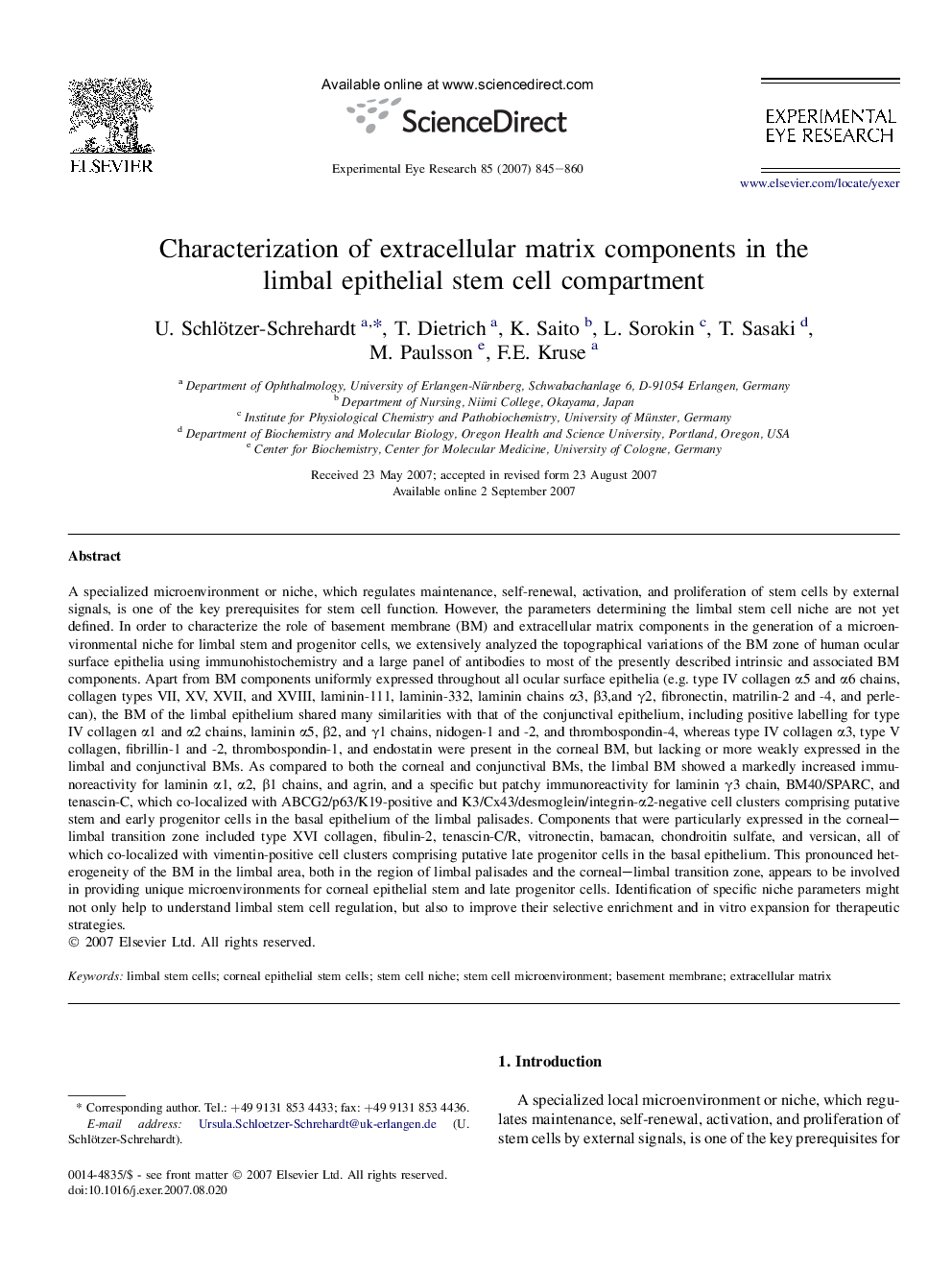| کد مقاله | کد نشریه | سال انتشار | مقاله انگلیسی | نسخه تمام متن |
|---|---|---|---|---|
| 4012847 | 1261216 | 2007 | 16 صفحه PDF | دانلود رایگان |

A specialized microenvironment or niche, which regulates maintenance, self-renewal, activation, and proliferation of stem cells by external signals, is one of the key prerequisites for stem cell function. However, the parameters determining the limbal stem cell niche are not yet defined. In order to characterize the role of basement membrane (BM) and extracellular matrix components in the generation of a microenvironmental niche for limbal stem and progenitor cells, we extensively analyzed the topographical variations of the BM zone of human ocular surface epithelia using immunohistochemistry and a large panel of antibodies to most of the presently described intrinsic and associated BM components. Apart from BM components uniformly expressed throughout all ocular surface epithelia (e.g. type IV collagen α5 and α6 chains, collagen types VII, XV, XVII, and XVIII, laminin-111, laminin-332, laminin chains α3, β3,and γ2, fibronectin, matrilin-2 and -4, and perlecan), the BM of the limbal epithelium shared many similarities with that of the conjunctival epithelium, including positive labelling for type IV collagen α1 and α2 chains, laminin α5, β2, and γ1 chains, nidogen-1 and -2, and thrombospondin-4, whereas type IV collagen α3, type V collagen, fibrillin-1 and -2, thrombospondin-1, and endostatin were present in the corneal BM, but lacking or more weakly expressed in the limbal and conjunctival BMs. As compared to both the corneal and conjunctival BMs, the limbal BM showed a markedly increased immunoreactivity for laminin α1, α2, β1 chains, and agrin, and a specific but patchy immunoreactivity for laminin γ3 chain, BM40/SPARC, and tenascin-C, which co-localized with ABCG2/p63/K19-positive and K3/Cx43/desmoglein/integrin-α2-negative cell clusters comprising putative stem and early progenitor cells in the basal epithelium of the limbal palisades. Components that were particularly expressed in the corneal–limbal transition zone included type XVI collagen, fibulin-2, tenascin-C/R, vitronectin, bamacan, chondroitin sulfate, and versican, all of which co-localized with vimentin-positive cell clusters comprising putative late progenitor cells in the basal epithelium. This pronounced heterogeneity of the BM in the limbal area, both in the region of limbal palisades and the corneal–limbal transition zone, appears to be involved in providing unique microenvironments for corneal epithelial stem and late progenitor cells. Identification of specific niche parameters might not only help to understand limbal stem cell regulation, but also to improve their selective enrichment and in vitro expansion for therapeutic strategies.
Journal: Experimental Eye Research - Volume 85, Issue 6, December 2007, Pages 845–860